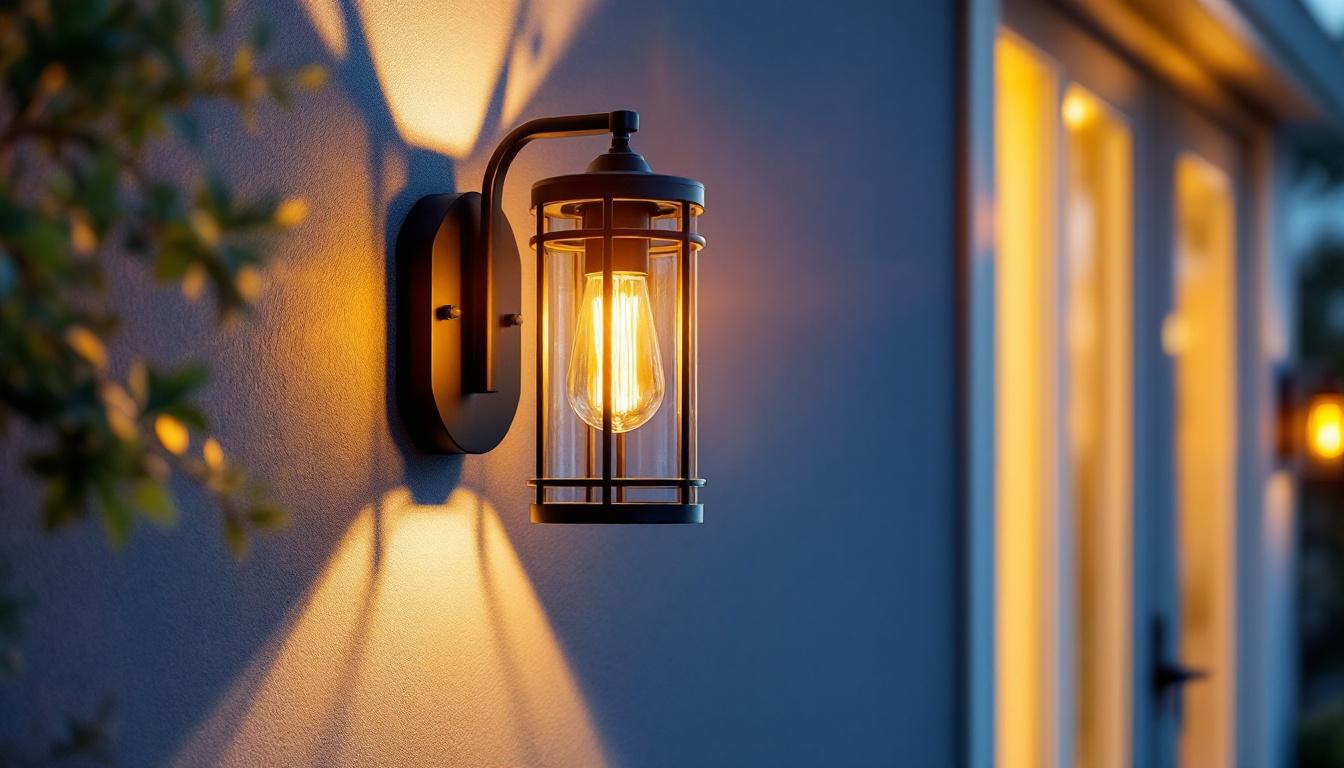
As the demand for energy-efficient lighting solutions continues to rise, LED lights have become a staple in both residential and commercial settings. However, to fully harness the benefits of LED technology, lighting contractors must understand the nuances of using dimmable switches. This article delves into essential tips and best practices for effectively implementing dimmable switches for LED lights, ensuring optimal performance and customer satisfaction.
Dimmable switches serve as a crucial component in modern lighting systems, allowing users to adjust the brightness of their lights according to their needs. Unlike traditional incandescent bulbs, which dim uniformly, LED lights require specific dimming technology to operate effectively. Understanding the mechanics behind these switches is vital for lighting contractors.
There are primarily two types of dimmable switches available in the market: leading-edge and trailing-edge dimmers. Leading-edge dimmers are typically compatible with older technologies, while trailing-edge dimmers are designed for newer LED systems. Each type has its advantages and drawbacks, making it essential for contractors to select the right one based on the specific LED fixtures being used.
Leading-edge dimmers tend to be less expensive and easier to install, but they may cause flickering or buzzing in some LED lights. Trailing-edge dimmers, on the other hand, offer smoother dimming and are less likely to cause interference, though they can be pricier. Understanding these distinctions will help contractors make informed choices that enhance the overall lighting experience for their clients. Furthermore, the choice of dimmer can significantly affect the ambiance of a space; for instance, trailing-edge dimmers can create a more refined and comfortable atmosphere, ideal for dining or relaxation areas.
One of the most critical factors to consider when selecting dimmable switches for LED lights is compatibility. Not all LED bulbs are designed to work with every dimmer switch, which can lead to performance issues such as flickering, reduced lifespan, or even complete failure. It is essential to check the manufacturer’s specifications and ensure that both the LED fixture and the dimmer switch are compatible.
Additionally, educating clients about the importance of using compatible products can prevent future headaches. Providing them with a list of recommended dimmable LED bulbs that work seamlessly with specific dimmer switches can enhance their satisfaction and trust in your expertise. Moreover, it’s worth noting that some manufacturers offer dimmable LED bulbs with built-in compatibility features, which can simplify the selection process for both contractors and clients. By staying informed about the latest advancements in dimming technology and product offerings, contractors can better serve their clients and ensure optimal lighting performance in their projects.
Proper installation of dimmable switches is crucial for ensuring optimal performance and longevity of LED lights. Lighting contractors must adhere to best practices during the installation process to avoid common pitfalls that could lead to customer dissatisfaction.
When installing dimmable switches, it is essential to follow the manufacturer’s wiring instructions meticulously. Incorrect wiring can lead to malfunctioning switches or even electrical hazards. Moreover, using the appropriate wire gauge is vital to ensure that the switch can handle the load of the LED fixtures.
Contractors should also consider the total wattage of the LED lights being controlled by the dimmer. Each dimmer switch has a maximum wattage rating, and exceeding this limit can cause overheating and failure. Always calculate the total wattage of the connected fixtures and ensure it falls within the dimmer’s rating.
In addition to wattage, it is also important to consider the type of LED bulbs being used. Not all LED lights are compatible with dimmers, and using non-dimmable bulbs with a dimmable switch can lead to performance issues. Contractors should recommend high-quality, dimmable LED bulbs that are specifically designed for use with dimmer switches, ensuring a seamless integration and optimal functionality.
After installation, testing and calibrating the dimmable switch is essential. This process involves verifying that the switch operates smoothly across its entire range of brightness settings. Flickering or abrupt changes in brightness can indicate compatibility issues or installation errors.
Contractors should encourage clients to test the dimmer switch in various lighting scenarios, such as during movie nights or dinner parties, to ensure it meets their needs. Providing guidance on how to operate the dimmer effectively can enhance user experience and satisfaction.
Furthermore, it is beneficial to educate clients about the importance of maintaining their dimmer switches. Regularly checking for any signs of wear or damage, such as unusual noises or inconsistent brightness levels, can help identify potential issues before they escalate. By fostering an understanding of proper usage and maintenance, contractors can empower clients to enjoy their lighting systems to the fullest, ensuring a long-lasting and enjoyable experience with their dimmable LED setups.
Even with proper installation and selection, issues may arise when using dimmable switches with LED lights. Being prepared to address these common problems can set a contractor apart in the competitive lighting industry.
Flickering is one of the most common complaints associated with dimmable LED lights. This issue can stem from several factors, including incompatible dimmer switches, poor-quality LED bulbs, or incorrect wiring. To troubleshoot flickering, contractors should first ensure that the dimmer switch is compatible with the LED fixtures being used.
If compatibility is confirmed, it may be necessary to replace the LED bulbs with higher-quality options or switch to a different dimmer type. Educating clients about the importance of using quality products can help mitigate this issue in the future. Additionally, it may be beneficial to discuss the installation of a dimmer switch that has a wider range of compatibility with various LED brands, as this can significantly reduce the likelihood of flickering. Contractors can also suggest using LED bulbs that have been specifically designed for dimming, as these often come with built-in features to minimize flicker and enhance performance.
Another frequent issue reported by users is buzzing sounds emanating from dimmable switches or LED fixtures. This problem can be caused by the dimmer’s technology or the quality of the LED bulbs. Trailing-edge dimmers typically produce less noise than leading-edge dimmers, making them a preferable choice for noise-sensitive environments.
Contractors should inform clients about the potential for buzzing and offer solutions, such as recommending quieter dimmer options or high-quality LED bulbs designed to minimize noise. Addressing these concerns proactively can enhance customer satisfaction and reinforce a contractor’s reputation. Furthermore, it’s wise to remind clients that environmental factors, such as temperature fluctuations and electrical interference, can also contribute to buzzing sounds. By ensuring that the electrical system is properly grounded and that the dimmer is installed away from sources of interference, contractors can help create a more stable and enjoyable lighting experience for their clients. This attention to detail not only resolves immediate concerns but also builds trust and reliability in the contractor-client relationship.
Providing an exceptional customer experience is paramount for lighting contractors. By offering valuable insights and support throughout the dimmable switch installation process, contractors can build lasting relationships with their clients.
Educating clients about the benefits and functionalities of dimmable switches can empower them to make informed decisions. Providing clear explanations of how dimming works, the advantages of using LED lights, and tips for optimal usage can enhance the overall experience.
Consider creating informative materials, such as brochures or online resources, that outline the benefits of dimmable switches and LED lighting. This not only positions the contractor as an expert but also helps clients feel more confident in their choices.
After the installation is complete, follow-up support is crucial. Checking in with clients to ensure they are satisfied with their new lighting system demonstrates a commitment to quality service. It also provides an opportunity to address any questions or concerns they may have.
Offering maintenance services or troubleshooting assistance can further enhance the customer experience and encourage repeat business. Establishing a reputation for excellent post-installation support can set a contractor apart in a competitive market.
The lighting industry is continually evolving, and staying informed about future trends can help contractors remain competitive. As technology advances, new opportunities for dimmable LED lighting solutions are emerging.
Smart home technology is gaining traction, and smart dimmers are becoming increasingly popular. These devices allow users to control their lighting remotely via smartphones or voice-activated assistants. Incorporating smart dimming solutions into a contractor’s offerings can attract tech-savvy clients and provide added convenience.
Contractors should familiarize themselves with various smart dimming options available in the market, including compatibility with existing lighting systems. Offering these solutions can position contractors as forward-thinking professionals who embrace innovation in lighting design.
As energy efficiency and sustainability become more critical, the demand for eco-friendly lighting solutions will continue to rise. Dimmable LED lights are inherently energy-efficient, but contractors can further enhance their offerings by promoting energy-saving practices and products.
Educating clients about the environmental benefits of using dimmable LED lights can resonate with eco-conscious consumers. Providing insights into energy savings and long-term cost benefits can help clients make informed decisions that align with their values.
Mastering the use of dimmable switches for LED lights is essential for lighting contractors looking to enhance their service offerings and customer satisfaction. By understanding the intricacies of dimming technology, adhering to best installation practices, addressing common issues, and staying informed about industry trends, contractors can position themselves as trusted experts in the field.
Ultimately, the goal is to create a seamless and enjoyable lighting experience for clients, ensuring that they can fully appreciate the benefits of modern LED technology. With the right knowledge and approach, lighting contractors can thrive in an ever-evolving industry, delivering exceptional results that meet the diverse needs of their clients.
Ready to elevate your lighting projects with the best dimmable switches and LED solutions? Look no further than LumenWholesale, where we provide lighting contractors with the highest quality, spec-grade lighting products at unbeatable wholesale prices. Say goodbye to unnecessary markups and hello to a vast selection of reliable, high-performance lighting that meets the most stringent industry standards. Plus, with free shipping on bulk orders, you can stock up on premium lighting without the worry of hidden fees. Don’t compromise on quality or value—choose LumenWholesale for a seamless blend of excellence and convenience. Wholesale Lighting at the Best Value is just a click away.

Discover essential insights into playroom lighting with our comprehensive guide for lighting contractors.

Discover the top benefits of halogen light bulbs for lighting contractors, including energy efficiency, superior color rendering, and cost-effectiveness.

Discover the essential checklist for lighting contractors seeking the brightest LED flood lights.

Discover the crucial role outdoor wall sconce light fixtures play in the success of lighting projects.